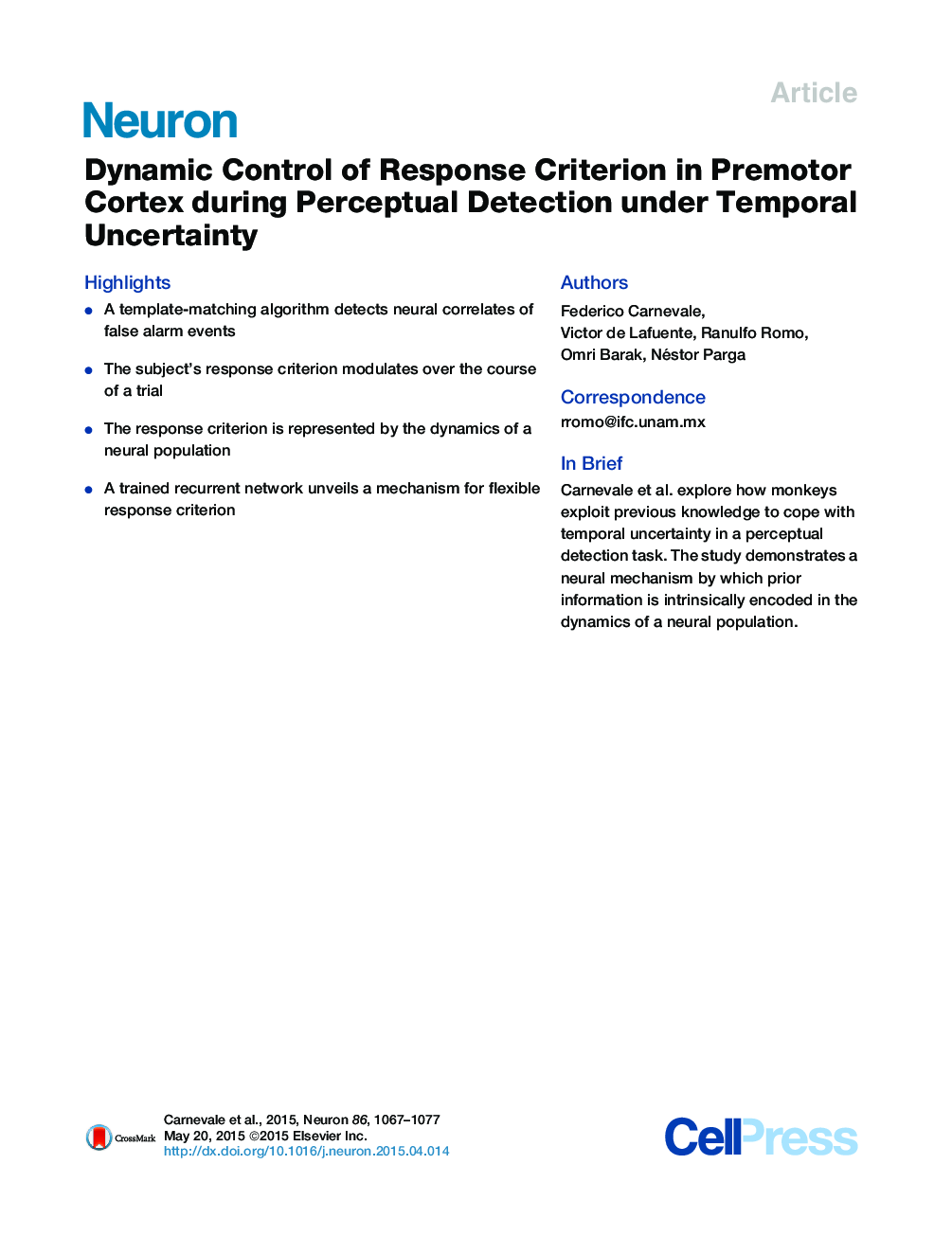| Article ID | Journal | Published Year | Pages | File Type |
|---|---|---|---|---|
| 4320852 | Neuron | 2015 | 11 Pages |
•A template-matching algorithm detects neural correlates of false alarm events•The subject’s response criterion modulates over the course of a trial•The response criterion is represented by the dynamics of a neural population•A trained recurrent network unveils a mechanism for flexible response criterion
SummaryUnder uncertainty, the brain uses previous knowledge to transform sensory inputs into the percepts on which decisions are based. When the uncertainty lies in the timing of sensory evidence, however, the mechanism underlying the use of previously acquired temporal information remains unknown. We study this issue in monkeys performing a detection task with variable stimulation times. We use the neural correlates of false alarms to infer the subject’s response criterion and find that it modulates over the course of a trial. Analysis of premotor cortex activity shows that this modulation is represented by the dynamics of population responses. A trained recurrent network model reproduces the experimental findings and demonstrates a neural mechanism to benefit from temporal expectations in perceptual detection. Previous knowledge about the probability of stimulation over time can be intrinsically encoded in the neural population dynamics, allowing a flexible control of the response criterion over time.
